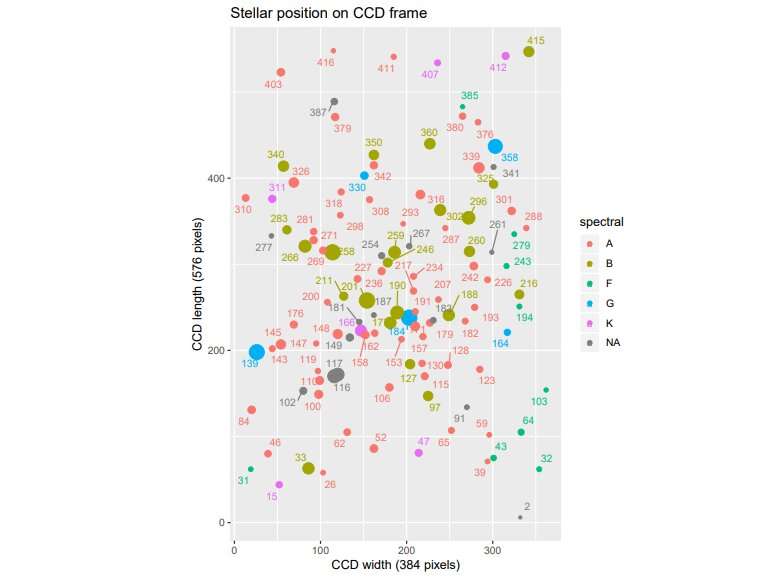Positions and Identifications of Stars in Melotte 105. Credit: Banks et al., 2019.
A new study recently conducted by astronomers has investigated the Melotte 105 open cluster with the aim on uncovering its fundamental properties. The research, presented in a paper published December 18 on arXiv.org, provides more accurate measurements of the cluster's distance, age and metallicity.
Open clusters, formed from the same giant molecular cloud, are groups of stars loosely gravitationally bound to each other. So far, more than 1,000 of them have been discovered in the Milky Way, and scientists are still looking for more, hoping to find a variety of these stellar groupings. Studies of known galactic open clusters could be crucial for improving the understanding of the formation and evolution of the Milky Way.
A team of astronomers led by Timothy Banks of the Nielsen Company decided to take a closer look at one of such clusters known as Melotte 105. Located some 7,200 light years away in the Galactic plane, Melotte 105 is a poorly studied compact open cluster. By analyzing archival photometry from the 1m McLellan telescope (with the seven filter intermediate band Vilnius system) at Mount John University Observatory in New Zealand and astrometric data from ESA's Gaia satellite, the researchers gained more insights into the nature of this cluster.
"The Gaia Data Release 2 (DR2) and Vilnius photometric data of the cluster were used to estimate the structural parameters of the cluster, probability of stellar membership in the cluster, the distance modulus and the cluster age," the astronomers wrote in the paper.
Photometric data show that the reddening of Melotte 105 is 0.34 mag, while its true distance modulus was found to be 12.9. It was noted that these results differ from those derived by previous studies.
According to the paper, Melotte 105 is located about 6,774 light years away, while its perigalactic and apogalactic distances were obtained as 22,330 and 24,250 light years respectively. The cluster's maximum vertical distance from the Galactic plane was calculated to be about 274 light years and the eccentricity of its orbit was measured to be 0.042.
The study found that Melotte 105 is about 240 million years old and has a metallicity (Fe/H) at a level of approximately 0.24. The researchers added that these results support the assumption that the cluster was formed in a metal-rich environment within the sun circle.
The astronomers also calculated membership probabilities of the 116 candidate stars of Melotte 105. In result, they found that 99 of the stars from this sample are most likely the members of this cluster.
In concluding remarks, the researchers underlined that although they managed to derive fundamental parameters of Melotte 105, still further investigation is needed to get a more complete view of this cluster.
"In the near future the Melotte 105 cluster could be studied via high resolution and high S/N spectroscopic observations. The cluster member stars then could be determined using radial velocity analysis, together with the model atmosphere parameters of the member stars and the mean metal abundance being obtained precisely," the authors of the paper noted.
More information: Vilnius Photometry and Gaia Astrometry of Melotte 105, arXiv:1912.08760 [astro-ph.SR] arxiv.org/abs/1912.08760
© 2019 Science X Network
























